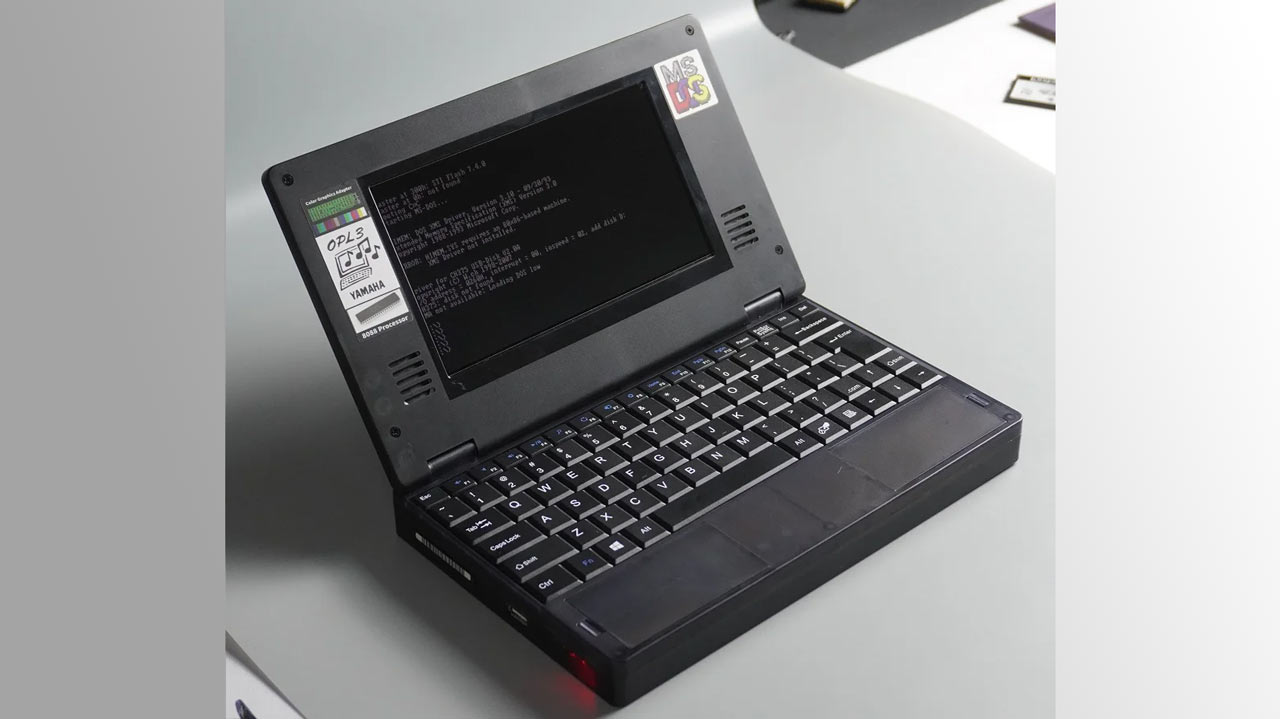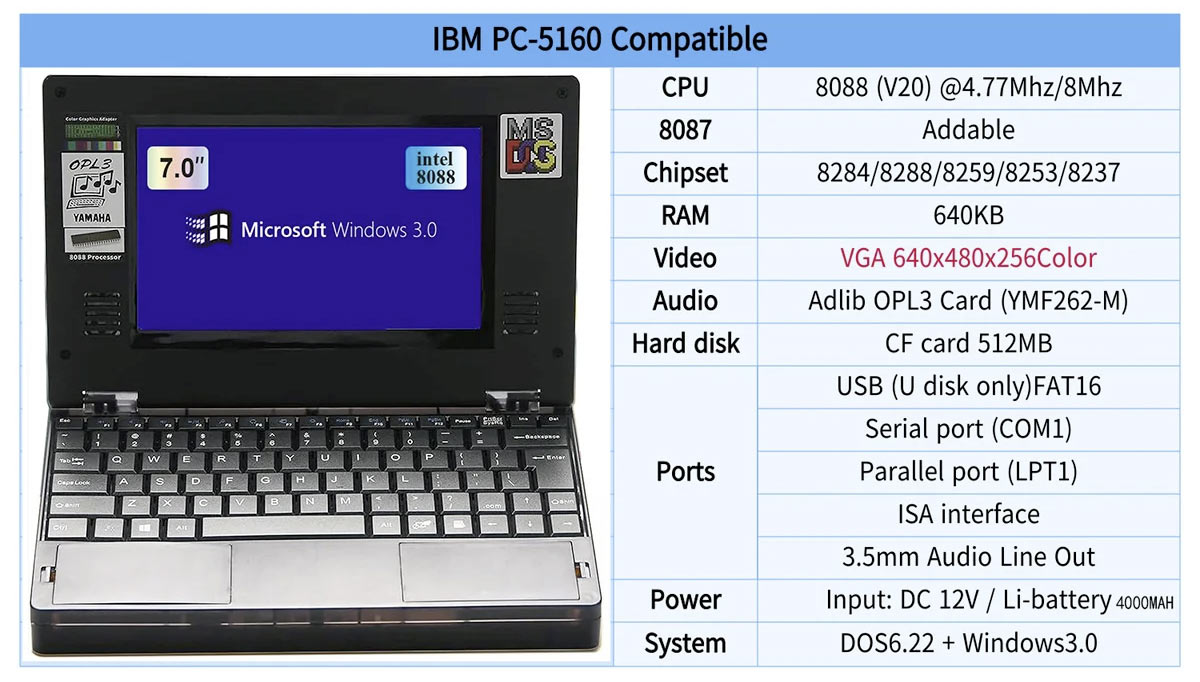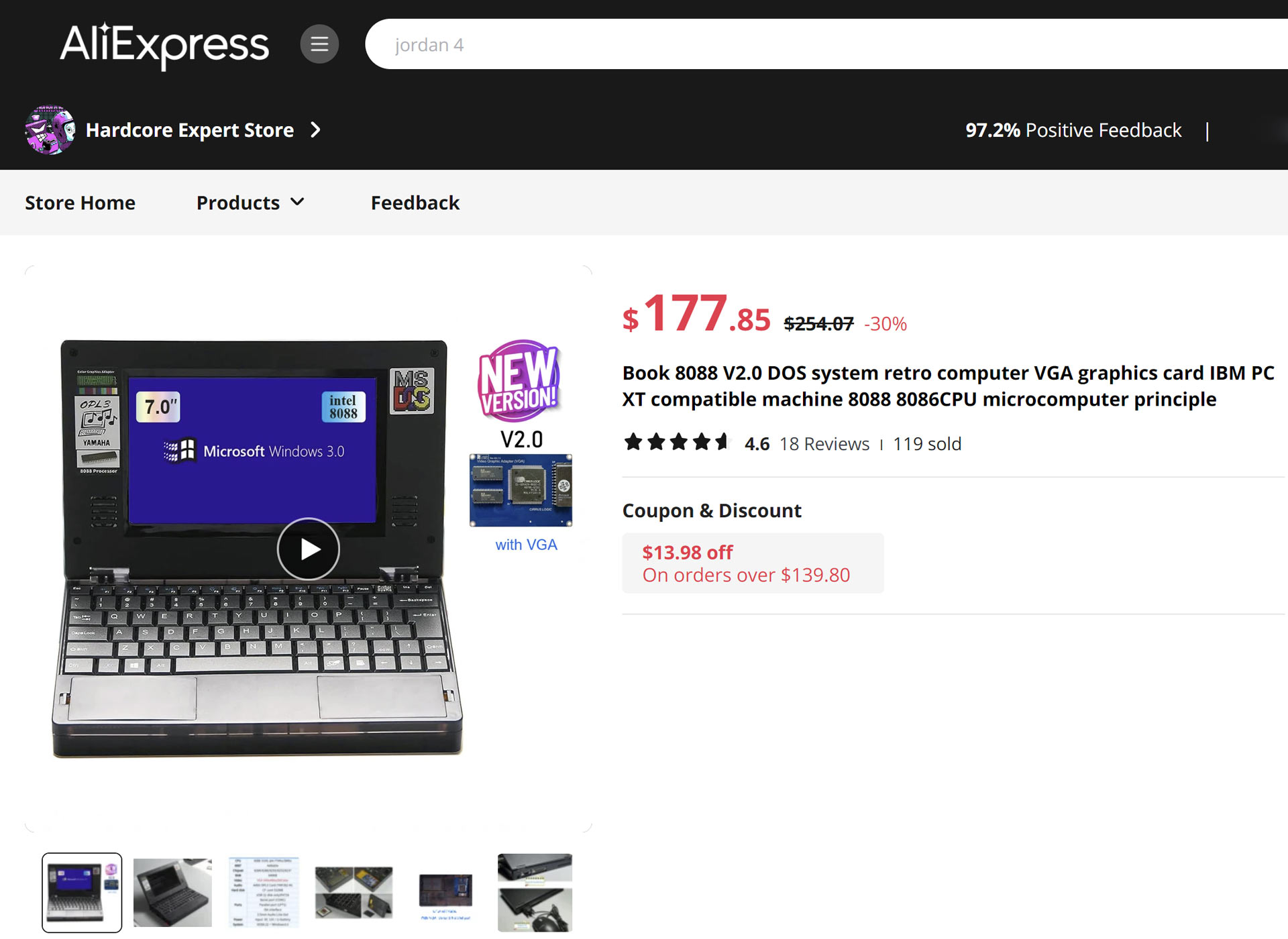Retro laptop powered by the Intel 8088 processor updated to v2.0 with Cirrus Logic VGA graphics — Book 8088 adds COM and LTP ports, too

The Book 8088 retro laptop has been updated significantly (h/t Anatoly Shashkin). This quirky Intel 8088 CPU-packing portable has been given a graphics adapter upgrade, from CGA to Cirrus Logic accelerated VGA. Additionally, the device now features an additional pair of useful legacy ports: a COM (serial) port and an LTP (parallel) port. The price also seems better than ever, listed on AliExpress at $177.85 at the time of writing, a slight savings on the v1.0 edition last year that launched at $195.
Yes, it is a retro computer, but buyers of the updated Book 8088 no longer have to slum it with CGA graphics. The previous model's use of the ancient IBM CGA graphics standard, an acronym for Color Graphics Adapter, meant that the first version of the Book 8088 was only capable of displaying up to 640 x 200 pixels on the built-in display, with a maximum of 16 simultaneous colors.
Using the Book 8088 v2.0 with a VGA graphics accelerator will represent a big step up for those looking for more detailed graphics, or potentially running an early edition of Windows. Having 640 x 480 pixels and up to 256 colors on screen might not sound like much in 2024, but as any PC user who was around in the late 1980s will remember, it is a big leap forward from CGA.
Peeping at the images of the ‘graphics card’ installed in this portable, we see it uses the Cirrus Logic GD5429 chip, with a core clock of up to 86 MHz, and this sample seems to boast 512KB of video memory. There is no need to be disappointed about the upgrade due to any sense of ‘retro purity,’ as the VGA chip should fully support most official CGA (and EGA) graphics modes.
Other upgrades to the Book 8088 v2.0 take the form of the legacy ports provided. A serial port is now present and can be used to plug in a mouse or other 9-pin COM port-friendly device. The new parallel port could be useful to retro computing enthusiasts, too. It was most commonly used for connecting PCs to printers, but other peripherals also used this port.


So, you might as well get the Hand 386?
As far as we can tell, the upgraded graphics and addition of the two ports haven’t necessitated any sacrifices to the earlier design. However, for the higher res apps, and games (and Windows), the lack of horsepower of the Intel 8088 at 4.77 MHz or even at 8 MHz will be all the more apparent. It almost turns potential customers towards the Hand386 ($199), except that the more modern and powerful i386-based retro portable uses a peculiar 2DS-like form factor instead of a clamshell design.
Get Tom's Hardware's best news and in-depth reviews, straight to your inbox.

Mark Tyson is a news editor at Tom's Hardware. He enjoys covering the full breadth of PC tech; from business and semiconductor design to products approaching the edge of reason.
-
bit_user The look reminds me of the original Toshiba Libretto, which was the first mini-notebook PC I'd ever seen. However, I think that launched with a 486-class CPU.Reply
Here's a pic of a slightly later model. It's a little hidden by the grass, but a distinctive element of their shape was how thick they were (relative to their size):
https://en.wikipedia.org/wiki/Toshiba_Libretto#
They were slightly larger than a VHS tape.

